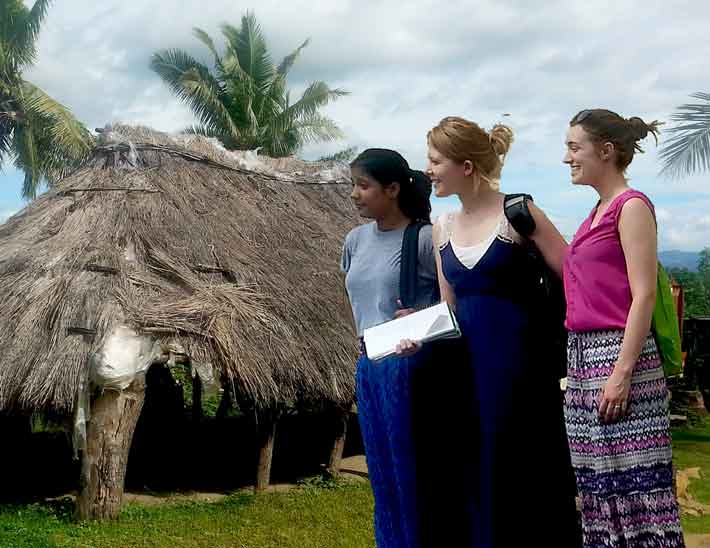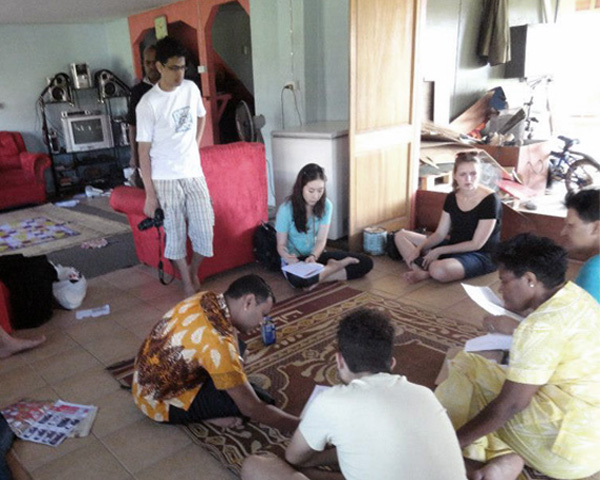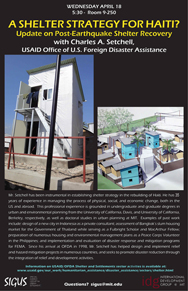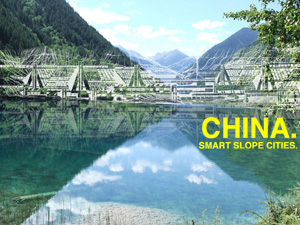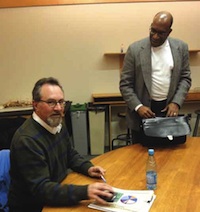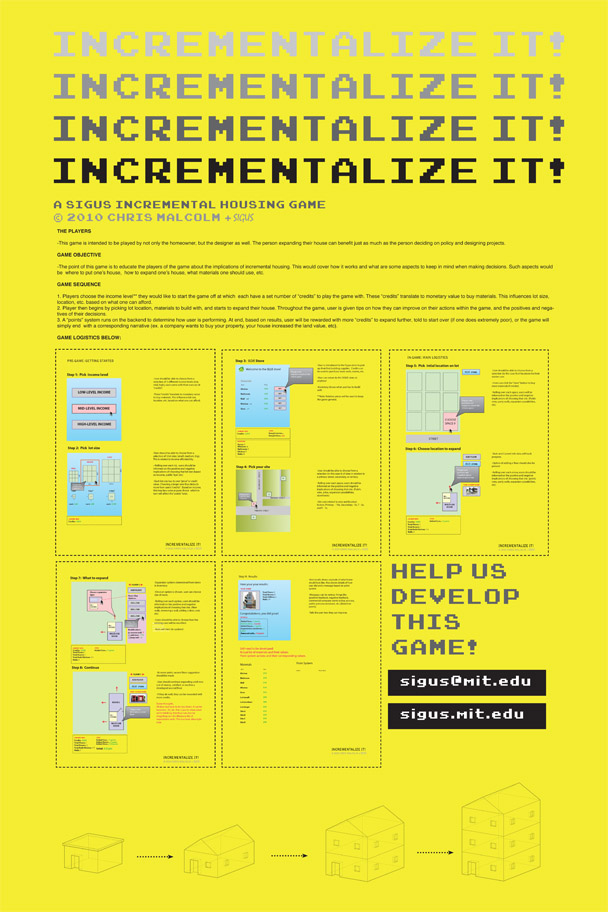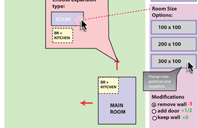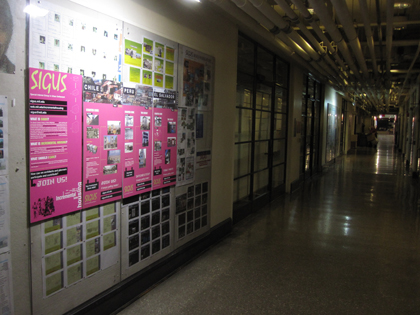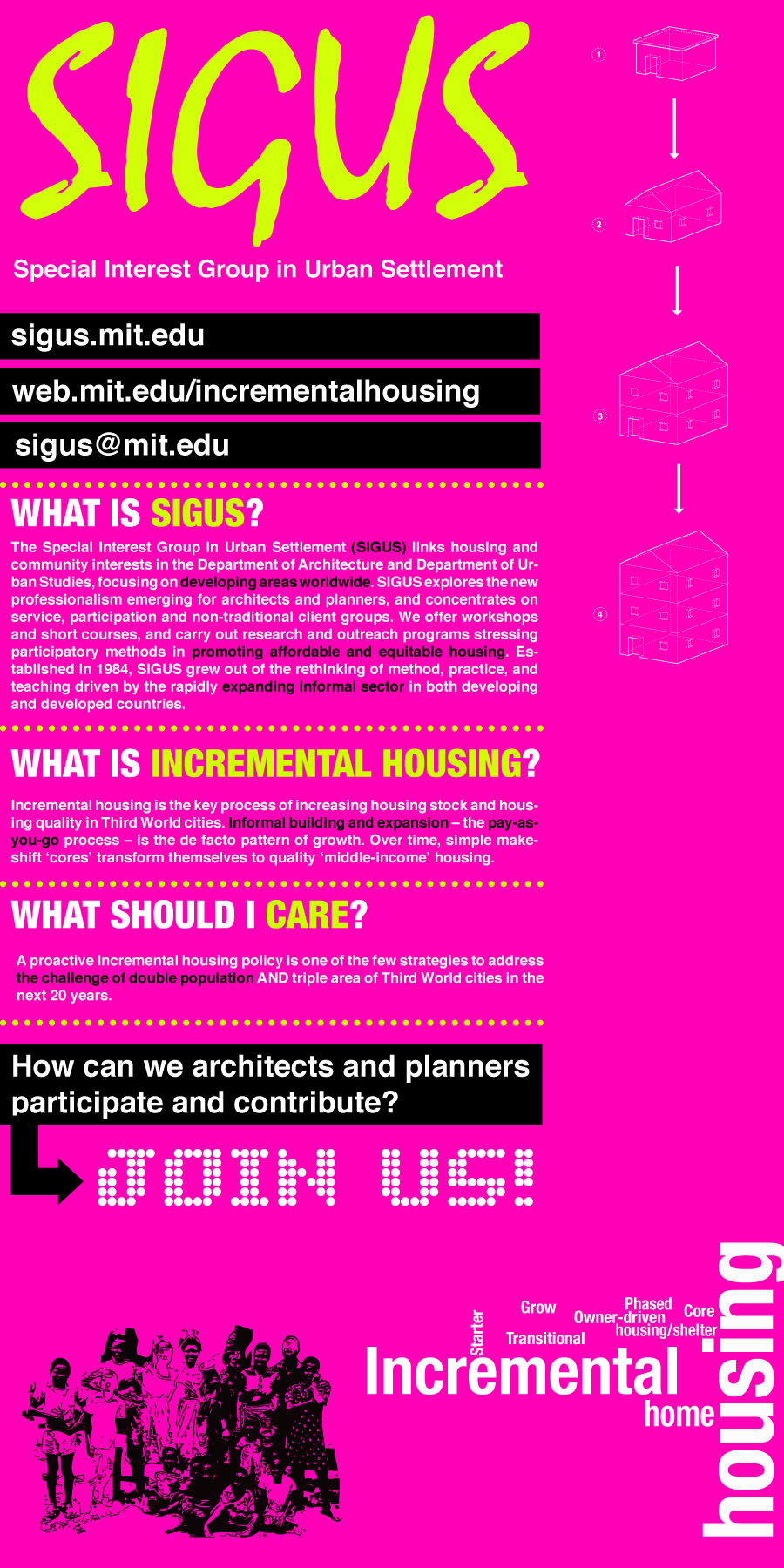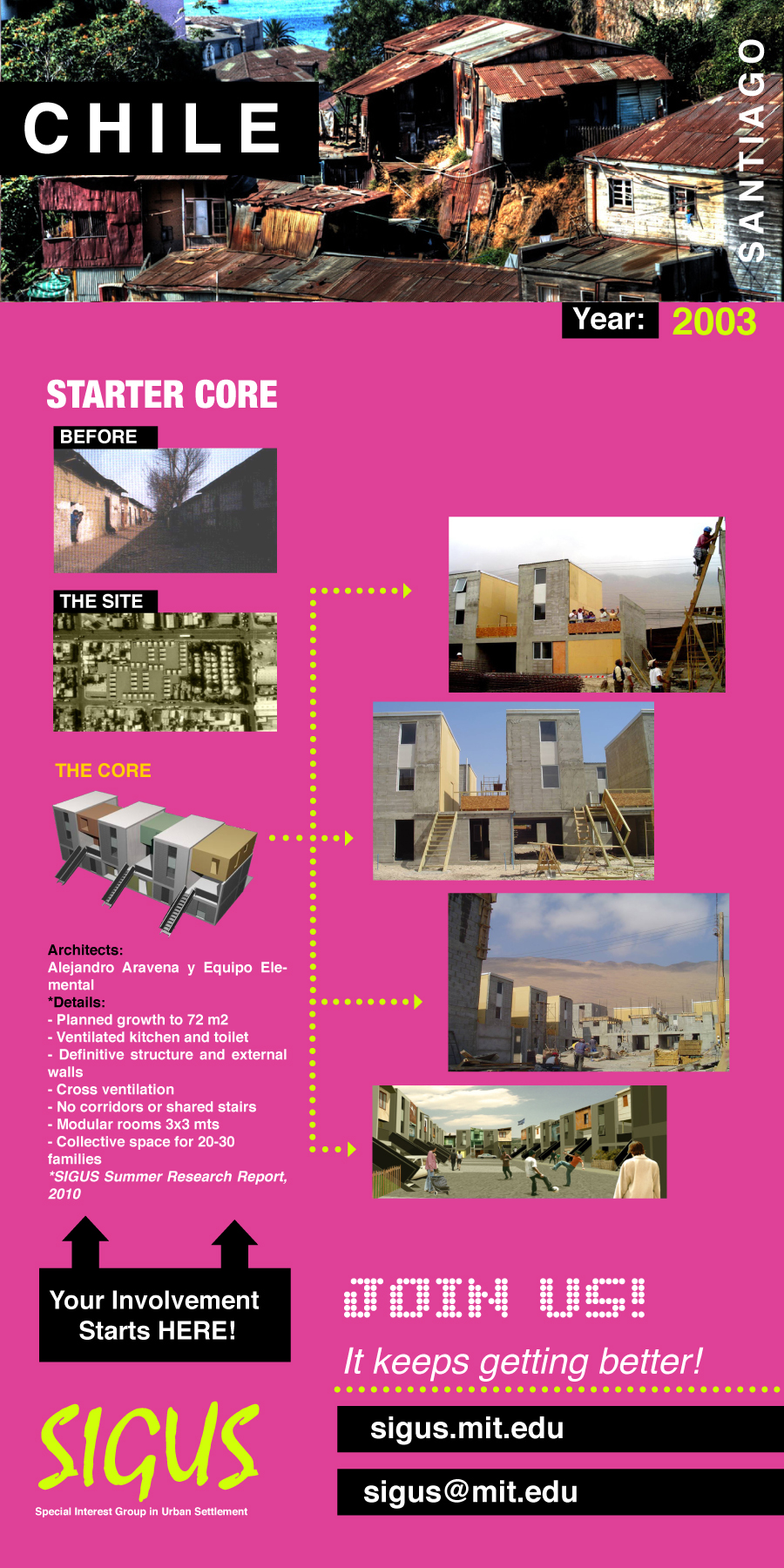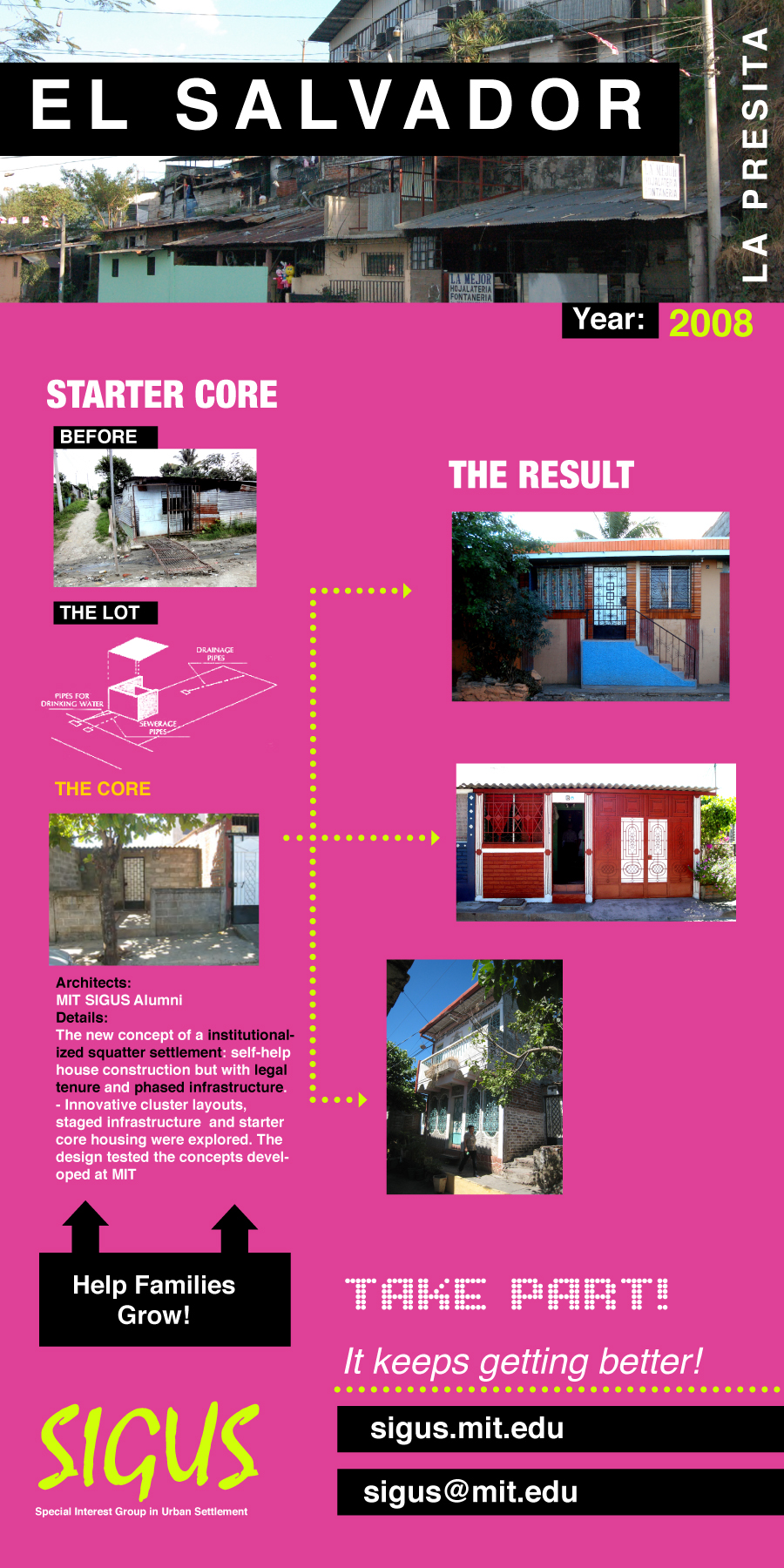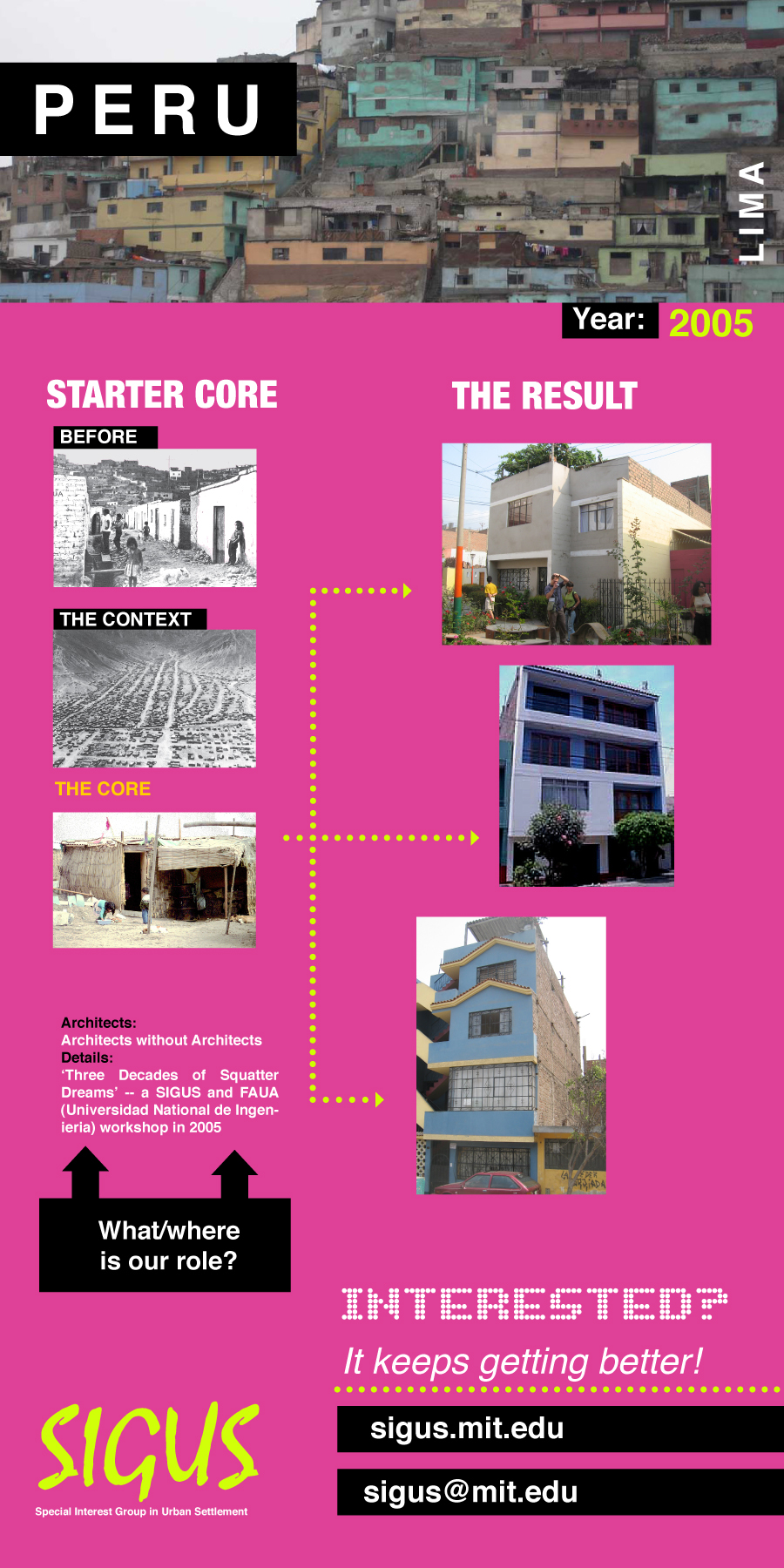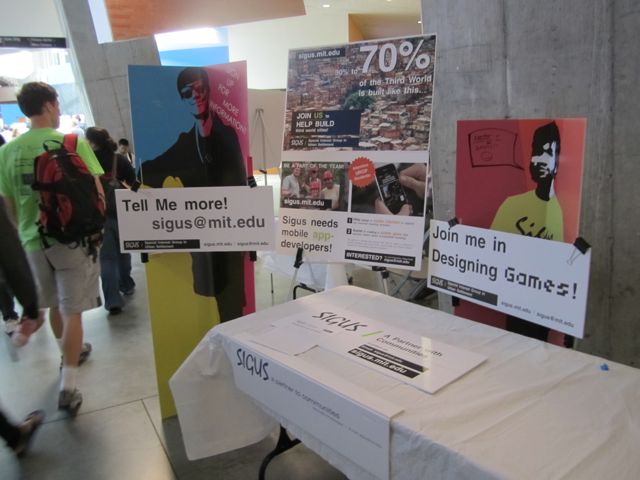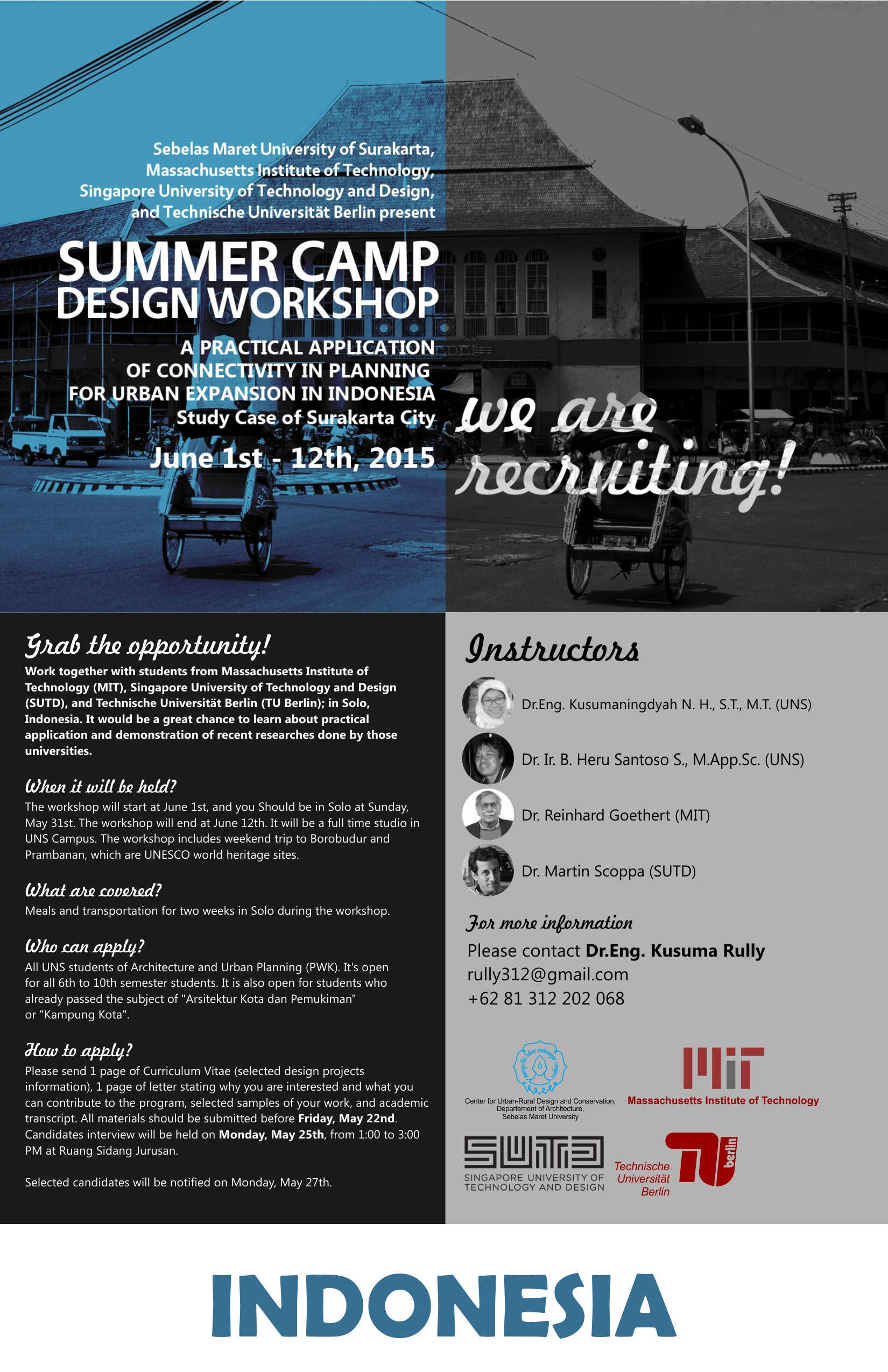
SIGUS co-hosted a 2-week workshop on Planning Urban Expansion in Solo, Indonesia, June 1-12, 2015. It was a joint offering by the SIGUS Group at MIT, and the Sebelas Maret University, together with the Singapore/MIT University of Technology and Design (SUTD) and the Technical University (TU) of Berlin. 18 students participated. The workshop addressed the critical urban expansion issues in urban areas of Indonesia, using Solo as the reference. Particular interest was in connectivity issues of large organizing frameworks, along with housing strategies to address urban growth. Two types of expansion issues were explored: issues related to the extensive farmland using land farming divisions as basic framework, and issues related to expansion influenced by small villages surrounding Solo.
Summary Report of Presentations
Farm Poster I: Click Here
Farm Poster II: Click Here
Farm Poster III: Click Here
Village Poster I: Click Here
Village Poster II: Click Here
Village Poster III: Click Here
Newsarticles about the workshop
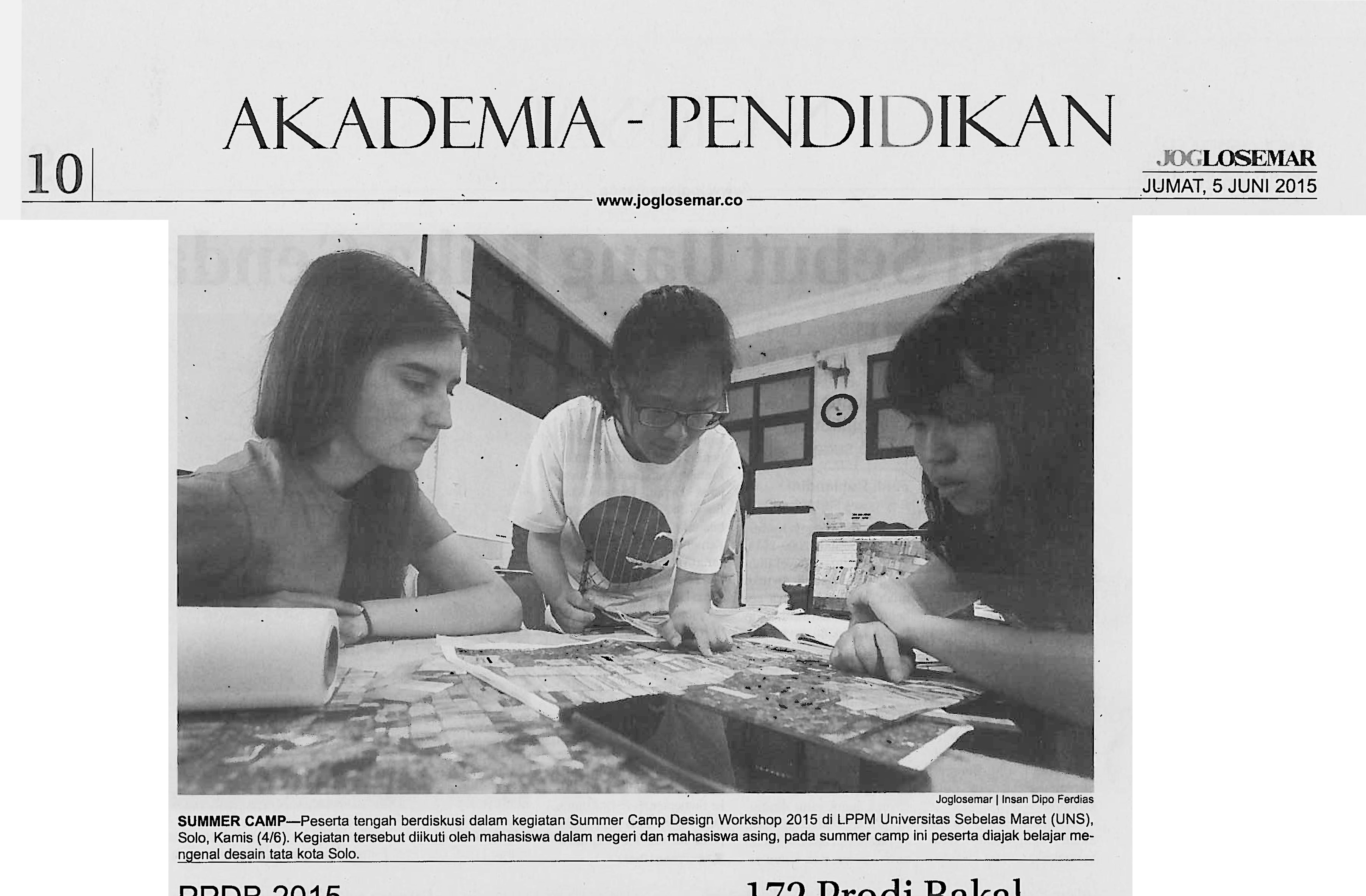
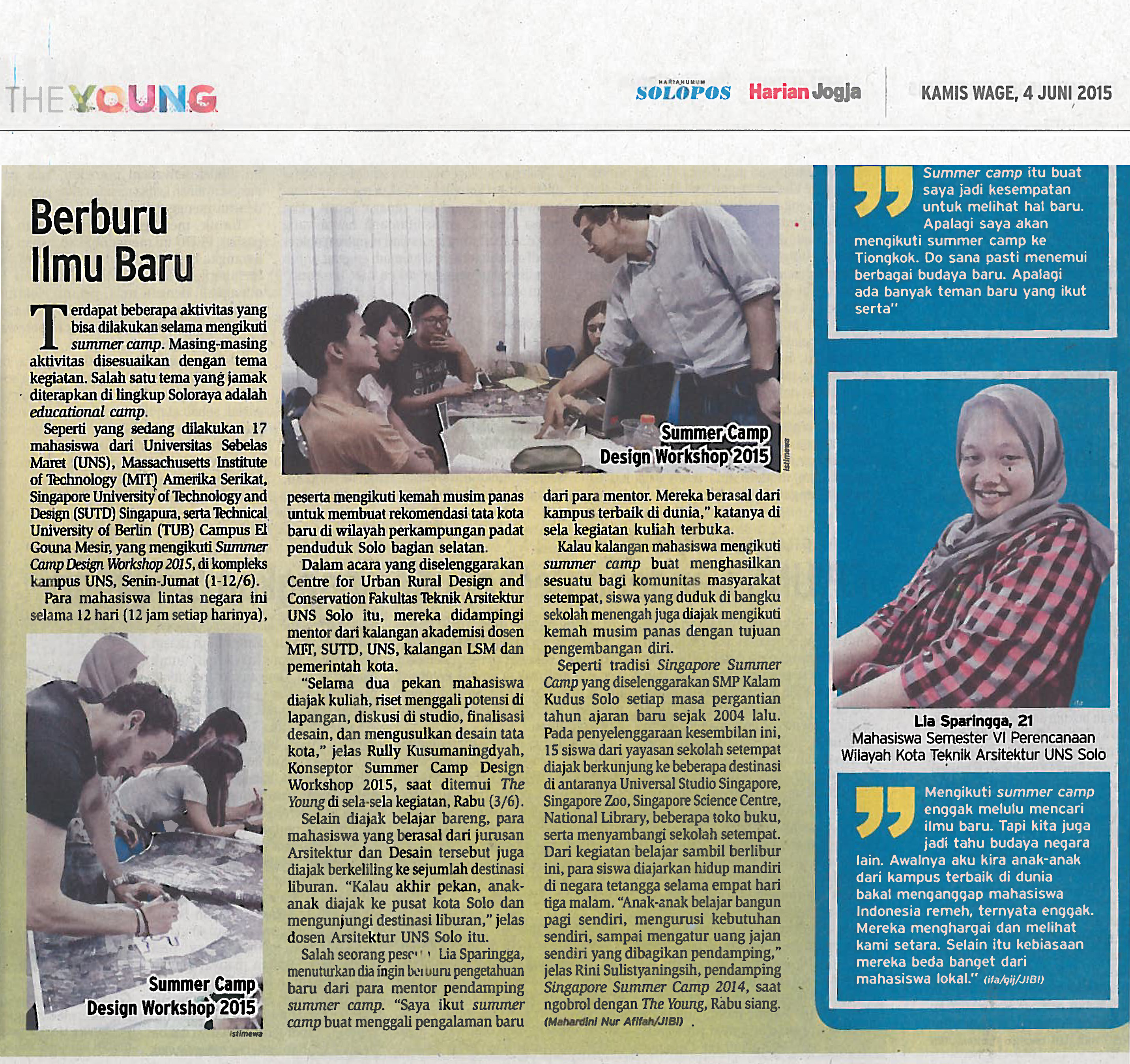
In the workshop

As part of the new initiative on application of Unmanned Aerial Vehicles in Disaster Assessment, Monitoring and Recovery, the SIGUS UAV Team attended the international disaster conference in New Orleans. (Note: UAV is the polite term for drones.) After the conference, the UVA Team met with partners in Houma on the Louisiana coast to discuss and test the use of UAVs in disaster assessment.
At the IDCE expecting to hear "great things" on the experience of using UAVs in disasters, the SIGUS Team was disappointed to learn that the speaker cancelled. Thereupon the SIGUS Team took over and did their presentation on UAVs which they had prepared for their Houma partners. Well received by the 110 members in the audience, they were invited back by the organizers for next year's conference!
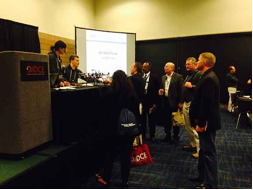
Sinead Cheung and Jacob Shearman, SIGUS UAV Team members
after their presentation in small group discussions.
After conference the UAV Team met with their counterparts in Houma, to the south on the Louisiana coast: Terrebonne Readiness and Assistance Coalition (TRAC), Bayou Area Readiness and Recovery Committee (BARR), and the Terrebonne Office of Homeland Security. A presentation was made to the assembled groups, and demonstration flights were undertaken.
Click here to see the video of the test flights.
A sample of aerial images from the UAV test flights:
A typical small road in the bayou.

Testing of flights in the center of the bayous

Flight over Houma Mardi Gras parade to text crowd control potential
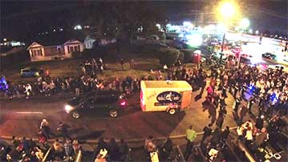
Dr. Reinhard Goethert and Dr. Martin Scoppa - the SIGUS Post-Doc from the MIT-Singapore program (SUTD) - attended the UN Habitat 6th International Conference 'RESPONSIVE URBANISM IN INFORMAL AREAS', hosted by Cairo University, November 25-27. The conference was held in preparation for the National Urban Forum in 2015. Goethert made a keynote presentation on 'Capturing Process of Informal Housing Development'. Both Scoppa and Goethert held a workshop on "GATHERING DATA WHEN ACCESS IS DIFFICULT - EXPERIMENTING WITH GOOGLE EARTH AS SURROGATE". The eight site and services/core house projects in Egypt of the 70s were the projects assessed.
Click here to see the workshop presentation.
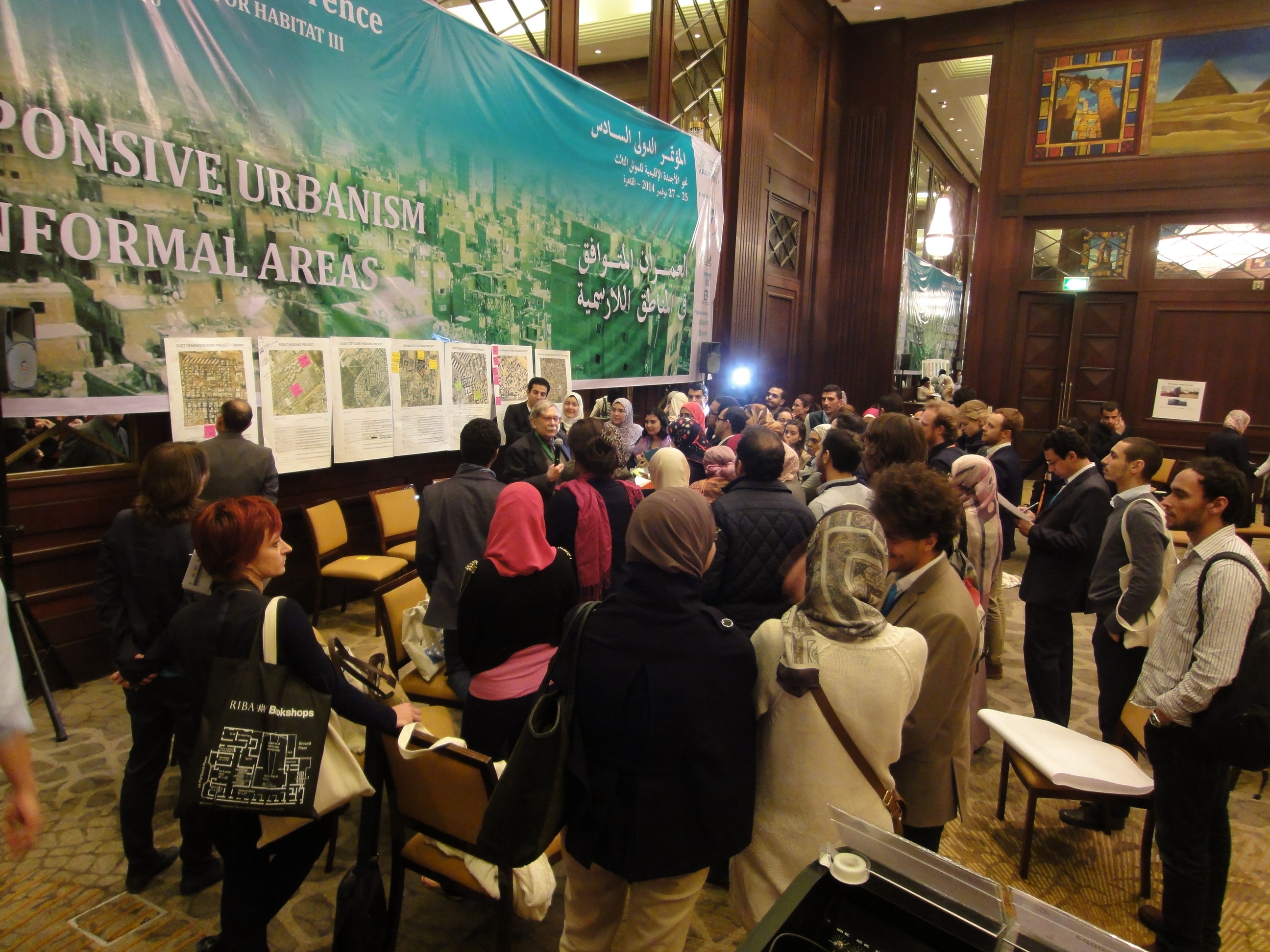
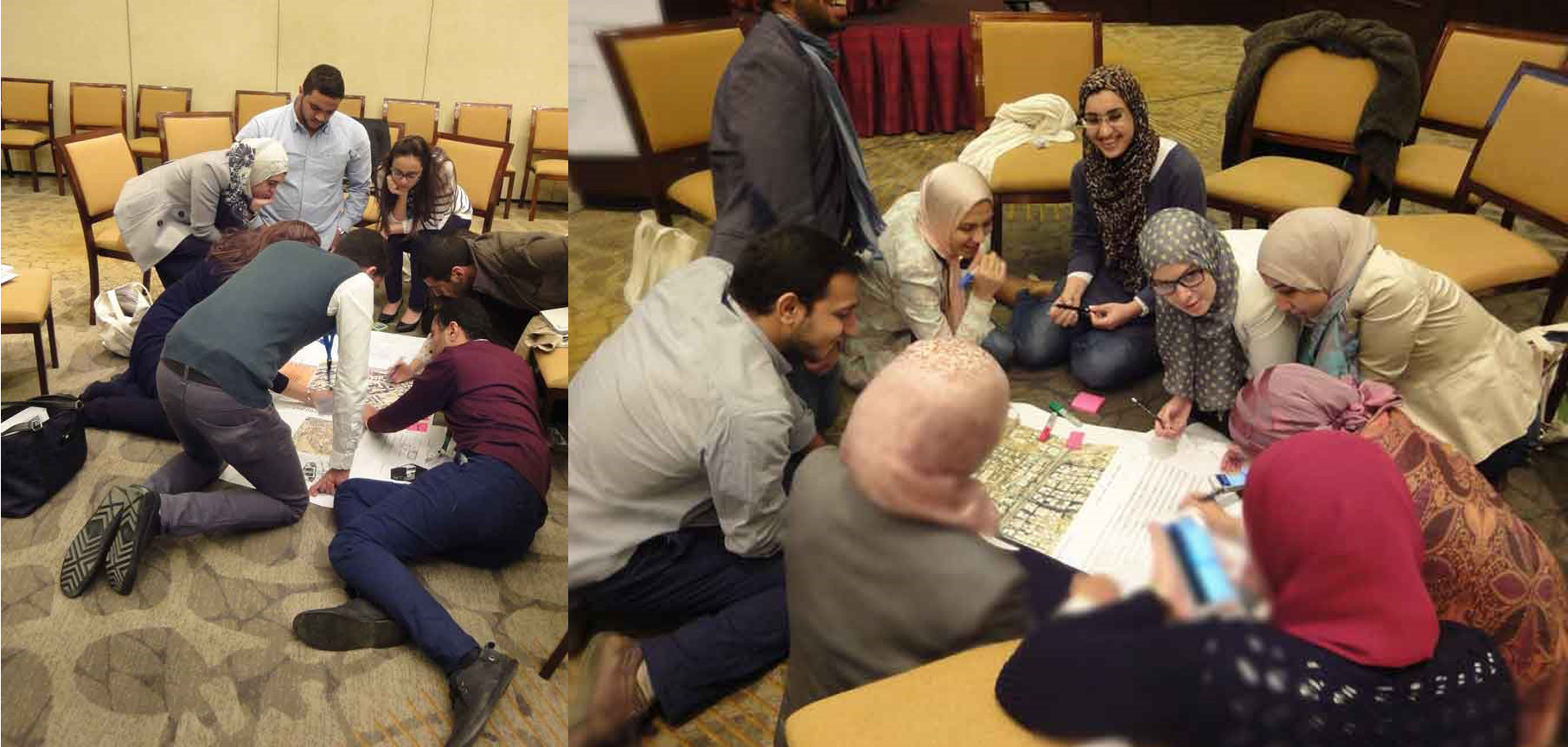
(Groups in workshop assessed project growth and change using Google Earth imagery.)
Entrepreneur, architect, sculptor and author - a true Renaissance Man! - gave an overview of his wide range of interests. His factory designed and built all of the public telephone booths in Mexico, along with many memorials as well as innovative streetlights and other public furniture. His work as a sculptor was applauded by being the first Mexican to exhibit at the Vatican. He designed and built rapid housing from cast-off plastic bottles.
For details of his work, see:
www.enriqueespinosa.com.mx 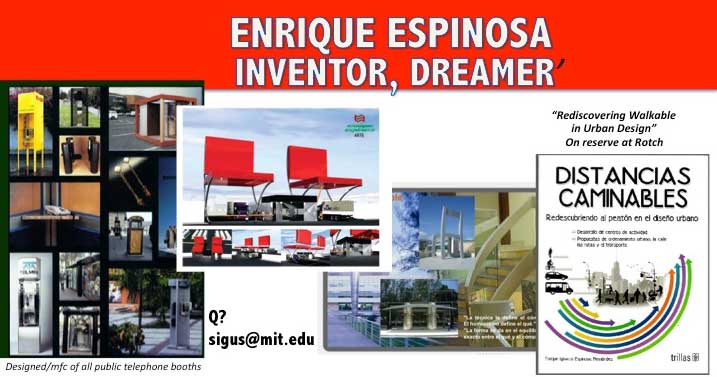
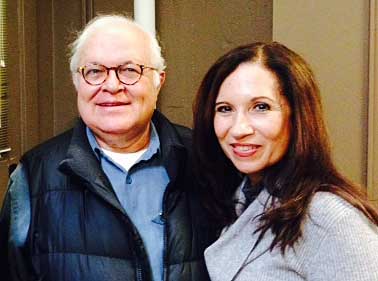
(Enrique and his wife, Linda)
SIGUS was invited to present their ‘TowerPower’ concept at the MIT Energy Night at the MIT Museum, 17 October. Although they were asked to present last year’s winning poster, this year an addition poster was prepared putting a ‘face’ to other applicable chimneys that could be repurposed worldwide. Bangladesh and England were shown, representing Third World and First World situations. Obsolescence and pollution were highlighted as the main market drivers for the repurposing concept. Bangladesh is confronted by an estimated 5,000 highly polluting brick burning kiln clusters. The World Bank has a large program for closing the chimneys, and the TowerPower concept may be ideal.

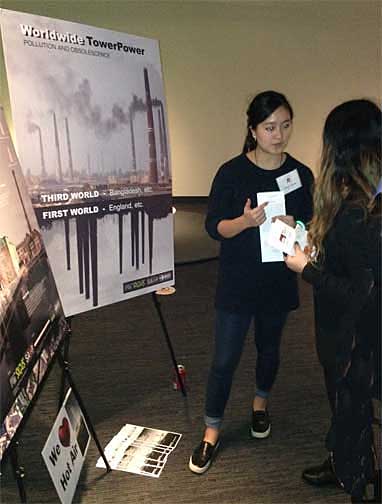
(SIGUS assistant Sine Cheung presenting aTowerPower to interested attendees)
Click here to download Handout (pdf)
HAS THE TIME COME TO SERIOUSLY CONSIDER DRONES IN RECOVERY?
The panel focused on the inevitability of using Unmanned Aerial Vehicles (UAVs) in disaster responses. The benefits seem to clearly outweigh concerns, and in a disaster situation UAVs could be overwhelmingly beneficial.

The panel was moderated by Dr. Reinhard Goethert, MIT. Panelists included a representative from an NGO with experience in Haiti, Dave Hampton, Principal, re:ground LLC, and members of the MIT UAV club involved in the research: Jacob Shearman, Sam Udotong, Sinead Cheung, Yamile Pariented. Staff form the Aurora Flight Company (a company located in Cambridge that designs and manufactures UAVs.) were unable to attend at the last minute.

A range of examples of UAVs were on display, and briefly flown to demonstrate.
The panel explored several basic issues:
- Are UAVs now sufficiently developed and commonly available to consider their use, from a technical and cost perspective (brief presentation of the range of available off-the-shelf UAVs)?
- What are probable benefits in the use of UAVs (summation and discussion of how UAVs could assist, in assessing damage and monitoring rebuilding; overview of how UAVs are already being used in other sectors)?
- What are the major hurdles to the use of UAVs (summation of mainly regulatory concerns of privacy and safety)?
- What is required for NGOs to adopt UAVs in their recovery operations (discussion of how to overcome regulatory impasse and how NGOs would need to adapt to UAVs)?
Several charts were presented to challenge the audience:


The long awaited biography of Horacio Caminos is now available!
The book can be ordered from Lulu
The introduction of the book can be downloaded here
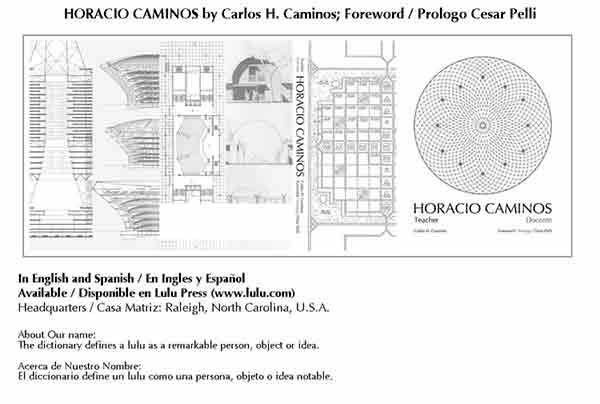
The modification of abandoned chimneys into ‘solar chimneys’ tap their energy potential using standard wind turbines. The TowerPower strategy overcomes the main cost component of a sufficiently tall chimney in achieving efficient airflow where height is an advantage for optimum stack effect.
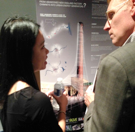 Many chimneys remain from the past industrial era of New England driven by the exploitation of regional rivers. These largely abandoned chimneys are relatively difficult and expensive to remove, and their reuse is a win-win opportunity for energy generation. The chimney network from former factories could provide the backbone for a low-cost, quick entry for power generation for the cities that developed around the previous industrial corridor.
Many chimneys remain from the past industrial era of New England driven by the exploitation of regional rivers. These largely abandoned chimneys are relatively difficult and expensive to remove, and their reuse is a win-win opportunity for energy generation. The chimney network from former factories could provide the backbone for a low-cost, quick entry for power generation for the cities that developed around the previous industrial corridor.
The abandoned factory complex could be converted into an attractive office complex or shopping hub, providing an economic stimulus to the urban areas.
The research is a spin-off from an earlier MISTI supported project in China, which included the exploration of using atriums in office buildings as surrogate chimneys to generate power. The research is being undertaken with the collaboration of the EcoCity Group of Nanjing University of Technology; Advisor to the project is Rick Ames, of Next Phase Studios in Boston.
TowerPower was selected Best Presenter at MIT Energy Night, October 18, 2013 and presenter at MIT Energy Conference, Feburary 22, 2014 at The Westin - Copley Place, as well as at other on-campus showcases.
Click here to download Poster (pdf)
Click here to download Handout (pdf)
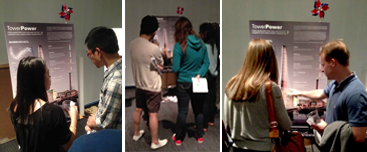
Three students engaged in field research in Fiji with two goals: documenting the rebuilding by home owners after recent cyclones; and documenting the rebuilding programs by the government and NGOs, primarily the Red Cross and Rotary International. Of particular interest was to see the capacity of the individual families in their rebuilding activities: do they have sufficient skills? what could be done to improve their rebuilding efforts: tools? materials? training? funding? Their research was part of a broader program exploring support policies for the informal builders that produce the largest proportion of affordable housing throughout the world.
The research team was hosted by the Ministry of Housing, Government of Fiji, under the guidance of Mrs. Mere Rayawa, Acting Principal Administration Officer.
One outcome was the need for a simple way to monitor the rebuilding process. The frequent cyclones in Fiji and in the surrounding islands beg a simple, inexpensive way to keep track of damage and rebuilding. Discussed was the use of a remote-controlled model airplane with camera as a possible solution which could be explored further at MIT.
The research team: Alex Wassenberg, Vanya Britto, Claire Markgraf.
Incremental housing is the newly embraced proactive strategy of the global development community. This workshop explores context specific guidelines of incremental housing and site planning for Fiji's new Strategic Housing Policy. The strategy developed takes a broad perspective and could serve as a model for new proactive strategies globally. The 6-member MIT team joined with planning staff from the Fiji Department of Housing. Field surveys, typologies of current housing and practices, and meetings with communities will inform policy recommendations.
Click here for details
Mr. Charles Setchell, of the USAID Office of Foreign Disaster Assistance, presented an ‘Update on Post-Earthquake Shelter Recovery in Haiti’ focusing on the general theme “A Shelter Strategy for Haiti”. (18 April 2012) He also engaged the Incremental Housing class with one-on-one discussions on the innovative 2-story transitional house being funded by USAID. The presentation was jointly hosted by SIGUS and the International Development Group of DUSP.
Mr. Setchell is known as ‘Mr. Shelter’ at USAID, and is responsible for the shelter after emergencies. He was extensively involved in the programs in Pakistan and Banda Aceh, and now is the lead for Haiti.
Click here for larger image
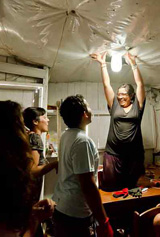 |
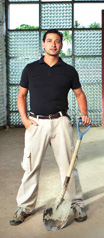 |
| Liter of Light in a Peru Shanty |
Illac Diaz in from of his bottle wall school |
Illac Diaz presented his ‘Liter of Light’ bottle recycling program and his Recycled Bottle School projects in a presentation 10 April. Illac is a former student of the course and alumni of the SPURS program at MIT, and presented his work which built on his experiences while studying at MIT.
He is the founder of the MyShelter Foundation in Manila and champion of the ‘Liter of Light’ program reusing plastic water bottles as a light source in slum shanties, as well as a construction system reusing plastic water bottles. He was cited as one of the “Young Global Leaders of 2008” by the World Economic Forum (WEF) in Geneva, and continues his entrepreneurial work in the Philippines and around the world.
For more information: http://en.wikipilipinas.org/index.php?title=Illac_Diaz
The community outreach brochures, pamphlets, and children’s coloring books and CD prepared by TRAC - the Terrebonne Readiness and Assistance Coalition - were presented to Dr. J.M. Yolene V. Surena, the Coordinator of the Disaster Risk Management unit in the rebuilding of Haiti. Dr. Surena welcomed the materials, and noted that they were actively developing similar information for all the communities throughout Haiti.
SIGUS worked with TRAC in the successful ‘Lift House’ program, where the SIGUS team designed an energy efficient model house, elevated 10-12 feet to meet the new building codes in response to Hurricane Katrina
For information on the Lift House, see:
A Home for Ms. Betty 2006-2007 (Powerpoint)
Lifthouse Summary Pamphlet (PDF)
TRAC: http://www.trac4la.com/TRAC1.1/page_lifthouse.php
SIGUS mounted a display at the 2011 International Development Fair at MIT 30 September. Three projects were presented that are a current focus of SIGUS, and seek participation from students throughout the Institute.
- An ‘Off-Grid’ Elevator for the bayous of Louisiana. The project partners with TRAC, an NGO in the bayous outside of New Orleans, in exploring a practical ‘off-grid’ elevator with solar, wind and kinetic energy sources. The elevators are attached to the Louisiana ‘Lift House’ design by SIGUS and TRAC, an affordable raised house option. Seven have been built, and the design continues to be disseminated.
- Community built center in Haiti. The development of a strategy for using rubble in building ‘Inspiring’ community centers, as a way to ‘jump-start’ the rebuilding process of destroyed neighborhoods.
-Smart Slope Density Calculator. Development of an Android based APP that calculates density at various slope angles. It would be used with an innovative steep-slope building concept in earthquake city rebuilding to be tested in China. he calculator is a part of the SIGUS-Nanjing University project funded by MIT MISTI.
The recent SIGUS student staff were captured in almost life-sized cutouts in the display, each holding one of the three projects. Christopher Malcolm, Cecilia Ho, and Jonathan Crisman.
See Proposal posters
SIGUS is beginning the exploration of an innovative concept for urban areas constrained by steep slopes which limit expansion and are seen as high-risk development zones. The innovative approach links an energy self-sufficient, ecology oriented sustainable model in a 'smart-city' approach.
The project is considering the Sichuan region or the Tibetan area of Yu Shu as case study.
The MISTI funded research program is a partnership with Nanjing University of Technology and SIGUS. It will include one week at MIT to explore the basic concepts, followed by two weeks in China for site visits and development of concepts.
Mr. Charles Setchell of USAID - known as Mr. Disaster
Shelter for the US Agency for International Development
- was our guest in an informal discussion on disasters,
focusing on the situation in Haiti. Faculty and students
from throughout the Cambridge academic community attended.
Prof. Mark Goulthorpe started the discussion with a
presentation of the innovative thermoplastic composite
sheets for housing construction. Rebuilding Haiti and
Pakistan were discussed, as well as the interplay among
government, development agencies, NGOs and the Haitian
diaspora.
Information on USAID shelter assistance programs may be
found
here
Specific information on the debate among Tent vs Plastic
Sheet and Pre-fab Construction in Disasters is available
here
Incrementalize It! is a game to highlight the
implications of incremental housing. It covers how it works
and what are some aspects to keep in mind when making
decisions. This includes where to put a starter core,
how/where to expand, what materials one should use, etc.
This game is not only for the homeowner, but the designer
as well. The person expanding their house can benefit just
as much as the person deciding on policy and designing
projects.
The game intends to promote the familiarly and use of
core housing, particularly for developing countries where
core housing would be an a vital proactive housing option
by governments.
Feel free to view the current pdf here.
Do you have experience in game development or these
applications? Are you interested? Please let us know at
sigus@mit.edu!
Calling all game developers!! Currently, we are in
hopes of developing a game (first on the web, then moving
it to a mobile platform), that will be used as a teaching
tool for the general public, as well as for people in
developing countries wishing to expand their houses with
incremental housing strategies.
We want to start out with a basic prototype that we hope to
expand. The game will first begin to be developed using
softwares such as php, javascript, and/or flash.
Logistics of the game are still being worked out. Feel free
to view the current pdf here.
Do you have experience in game development or these
applications? Are you interested? Please let us know at
sigus@mit.edu!
Posters:
*Please note that the main example for Chile is in
Iquique, not Santiago.
The Open House for applicants to the Master of Architecture
(MArch) Program or the Master of Science in Architecture
Studies (SMArchS) Program was held on November 4th. To
welcome potential incoming students, New SIGUS posters were
added to the main archiecture corridor.
These posters highlight the main principles of incremental
housing and what SIGUS has done over the past few years in
Peru, El Salvador, and Chile. Are you interested in getting
involved in our next endeavor? Please let us know at
sigus@mit.edu! Also,
feel free to get a closer look at these bright pink boards
by clicking on them!>
SIGUS participated in the 9th Annual International
Development Fair on September 24th. The Fair is
traditionally held each year early in the fall semester and
provides incoming and continuing MIT students, recent
graduates and members of the MIT community an opportunity
to learn about ways that they can become engaged in
international development. This year the fair was held on
the Stata "street".
Mr. Sigus and newly inaugurated, Sigus Jr. made a guest
appearance to call out for people to assist in aiding the
development of third world countries. How you ask? By
designing interactive iphone apps and games that illustrate
the principles of how incremental housing works!
Be part of a mobile app design that will be used to capture
informal housing data around the world! Help us inform
others about the incremental growth process! Are you
interested? We are looking for UROP students who are
mobile-app developers. Contact us at sigus@mit.edu!
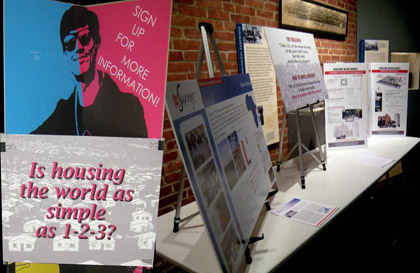
SIGUS exhibited its current research in incremental housing
at the 5th Annual International Development Night at MIT on
April 9. A lifesized Mr. SIGUS held the teaser: "Is housing
the world as simple as 1-2-3?", which related to the three
steps in incremental housing strategy: Establish a FRAME
for development; Provide a STARTER CORE; and SUPPORT the
process with appropriate policies.
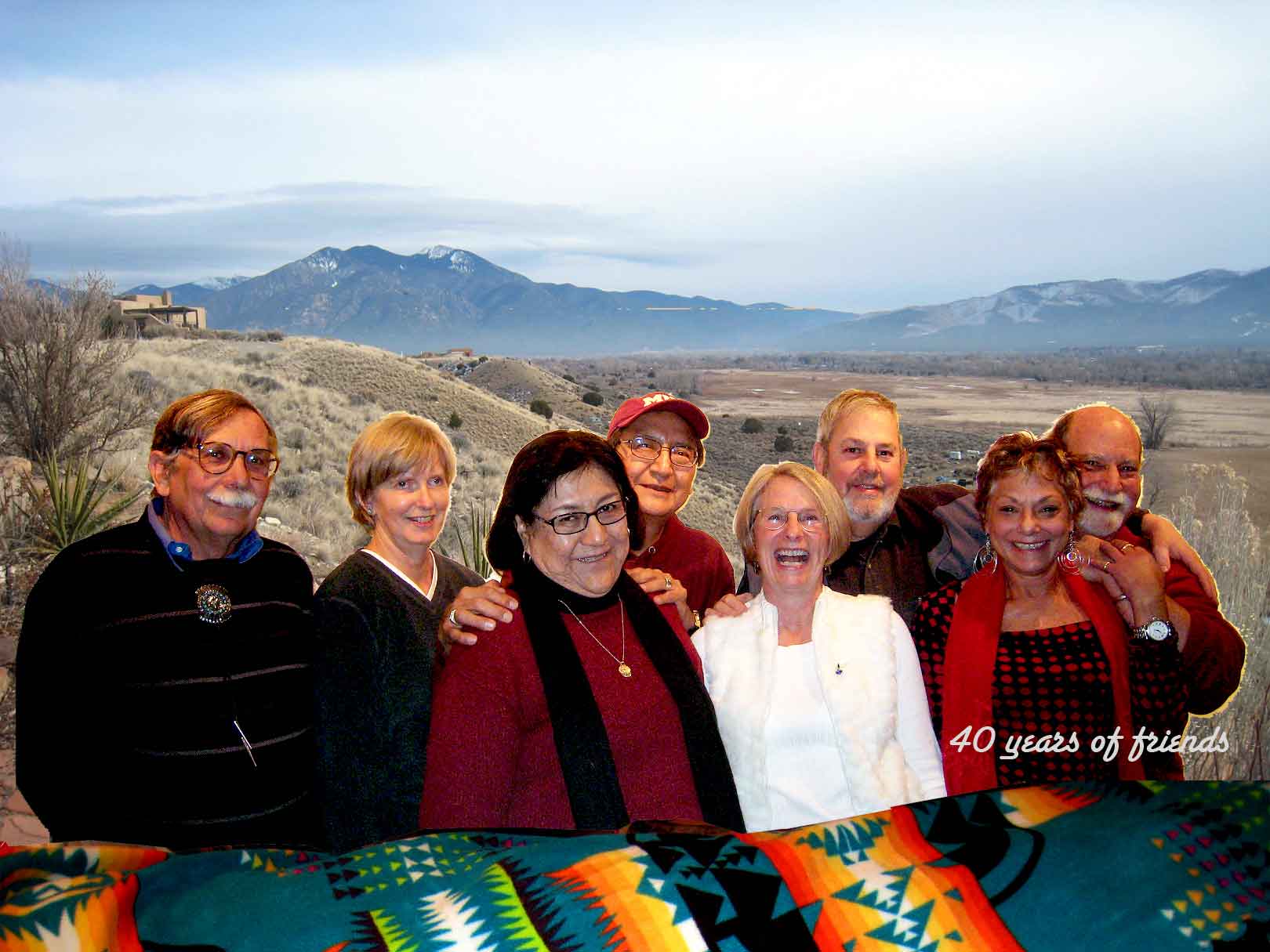
A reunion was held in the fall of 2009 at the
home of Bob Parker in Taos, New Mexico, with some
of the early graduates from the Urban Settlement
Design Program at MIT, now known as SIGUS -
Special Interest Group in Urban Settlement (the
name was changed in 1984 to better reflect both
architectural and planning interests of the
Program). Attending the two day event were: Earl
Kessler (1971) and his spouse, Shari Kessler
(also an MIT graduate (1971); Andy Acoya (1970)
and his spouse Marie Acoya, and Bob Parker (1970)
and his spouse, Deborah McLean; and Reinhard
(1970) and his wife Happy. Reinhard remained at
MIT following graduation and has headed up the
SIGUS Program for many years.
These graduates have remained life long friends
and during the reunion discussing the benefits of
our education that we received from MIT, how that
experience changed our lives and influenced our
careers, and perhaps, most important, the values
and ethics that we all derived from our time
together at MIT. Among those values and ethics
was a common thread of service to others and
honesty in professional work.
The Program at MIT had been initiated by the
renowned architect, planner and teacher, Horacio
Caminos, now deceased. John Steffian was an
Assistant Professor in the Program at that time
and worked with the students in a research and
tutorial capacity, along with John Turner as
occasional lecturer. It was through Professor
Caminos' inspiration and guidance that many of
the graduates from the Urban Settlement Design
Program began their careers working in the
developing country context with housing
settlement design and planning policy throughout
the World. Other early graduates in the Program
included Praful Patel who became VP of the World
Bank Southeast Asia and George Gattoni, one of
the authors of 'No More Slums' initiative that
lead to the founding of the World Bank/UN Habitat
Cities Alliance, and Roberto Chavez, a recognized
expert in upgrading low income settlements.
The many alumni have formed lasting collegial and
social friendships from their time at MIT. This
was a magical time at MIT and for most of us
remains as one of the seminal times of our lives.
One of the things that made the Program so
special were the many top thinkers who
participated in the program, including John
Turner, Hans Harms, Lloyd Rodwin, Donald Schon,
William Mitchell, Lisa Peattie, Kevin Lynch,
Chester Sprague and others. We all owe a great
debt of gratitude to them, to Horacio Caminos and
to the larger MIT community.
- From comments by Robert Parker, '70
Three projects were planned for the IAP period in
January 2009. See the project sheet for more details.
MIT students again collaborated with the
Perquin community in a design/build project
during January 2009. In the first collaboration
during IAP 2008, MIT students planned, designed
and built an improved outdoor washing area and a
shaded area for sitting and gathering outside of
the main prenatal clinic in Perquin. The interest
for January 2009 was centered on a two-week,
design-build project around Perkin with some
related planning components happening in
parallel.
Hurricanes Gustav and Ike again confronted us
with the increasing risk from global warming, and
the need to seriously re-evaluate coastal living.
Sustainability has become an added concern, and
the serious disruption of services - particularly
electricity and drinking water - after a storm
urge the need for a more comprehensive approach
toward housing. The goal of this project was to
design a sustainable cooperative village,
exploiting the opportunity of elevated housing
mandated by regulation and prudence. The project
was continued during the Spring Term. Several
field trips to the bayous were undertaken as
background to the studies.
Lamhin is an agricultural community in the
northeast outside Bangkok that is separated from
major roads by the Lamhin Canal. The mission of
this project is to build a bridge. The bridge
would allow cars and tractors to get inside the
community to help people plant, harvest and
transport the community’s main source of
income. It wouldl create an alternative way for
the people to increase their income by providing
means to commute to downtown Bangkok.
For more information, please see the project
sheet.
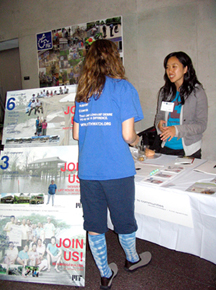
SIGUS participated in MIT's 6th Annual International
Development Fair, October 5, 2008. The Development Fair
(IDF) is an event designed to showcase the many groups,
projects and activities at MIT that provide students with
an opportunity to work on issues related to international
development. The Fair brings students and organizations
together, to promote awareness and encourage the exchange
of ideas. SIGUS highlighted 3 events being planned: A
Design/Build activity in El Salvador; 'Go Lamhin', a bridge
building project in rural Thailand; and an 'Action-Research
Workshop' developing a 'Smart Village' for the bayous of
Louisiana.
Esther Chung from the 'Go Lamhin' project fielded
questions from interested students.
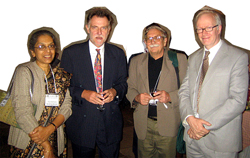
Reinhard Goethert was invited to join a group of
international experts in developing housing and land
strategies for UN Human Settlements Programme in Nairobi,
October 7-9. The goal of the sessions was to advise on
guiding strategies for the next 6 years within the
framework of ‘sustainable urbanization’. While
in Nairobi, discussions were held on the Habitat-University
Partnership Programme, and explored the potential
participation of MIT.
Prof. Banashree Banerjee, New Delhi; Florian Steinberg,
Asian Development Bank; Reinhard Goethert, SIGUS; Forbes
Davidson, Institute for Housing and Urban Development
Studies, Rotterdam.
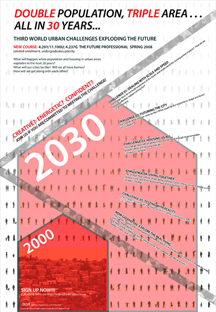
"Double Population, Triple Area: All in 30 Years":
Third World Urban Challenges Exploding the Future
The doubling of the Third World urban population - with
a tripling of the urban footprint by 2030 - has forecast a
vision of a frightening urban future. In the next 23 years,
the land required for urban growth will equal that used in
the past 6,000 years of human history. Moreover, this
growth is projected to be predominantly low-rise, and
inhabited by a largely poor population. The specter of
informal massive squatter fringe settlements of the past
has the potential to devastate our cities of the future.
Speed and scale are the new challenges.
Lacking are viable proactive approaches for housing the
low income population, and predictions for the future are
grim if no innovative approaches are developed and
implemented. Environmental concerns exacerbate the problem.
We must develop powerful creative strategies if we are to
avoid an unthinkable future.
This course is a challenge-based, hands-on brainstorming
of Third World urban issues, drawing on experts to excite
and challenge us through progressive levels of exploration.
A culminating workshop abroad brought us back to
reality.
The course included a 2-week field survey comparing
planning strategies in Singapore - a highly controlled
model - with the laissez-faire approach in Bangkok.
Creative? Energetic? Confident?
Join us if you are committed to meeting the challenge!
Click here
for more information!
Check out the Publication here
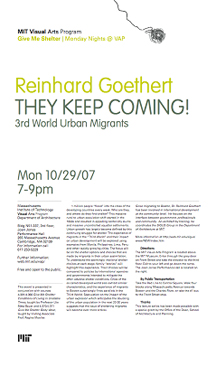
Reinhard Goethert presented the experiences from the
previous SIGUS workshops related to urban migration to the
Visual Arts Program. The migrants in the Third World and
their impact on urban development was explored using
examples from Manila, Philippines; Lima, Peru; and other
rapidly growing cities. Focus was on the shelter options
and choices which are made by migrants at each stage in
their urban assimilation.
The presentation was part of the series
“4.381/4.366 Advanced Visual Design - Give Me
Shelter: Conditions of Living in Unstable Times”.

George Fiebig presented his prize-winning Chumbe Island
Coral Park resort in Zanzibar. Mr. Fiebig is a young German
architect practicing in Australia, with projects in
Indonesia, Tanzania, Mozambique and Australia.
His prize-winning project links eco-interests with
tourism, and with a very compelling architecture using
natural materials.
www.chumbeisland.com
An International Two-Week Workshop in Louisiana
The workshop was a collaboration of students from
throughout the MIT community and from universities abroad.
Twenty students from MIT and abroad participated in 1-week
of hands-on repair and rebuilding of hurricane damaged
housing on the bayous of Louisiana, followed by 1-week of
design and construction of housing elements for the
on-going Lift House project.
Partner universities from previous international
workshops each selected 2-3 students to participate.
Workshop headquarters and accommodation were in the
‘Good Earth Volunteer Village’ in Houma,
Louisiana.
The program was divided into 2 phases:
- 1-week active building where participants
worked on repairing damaged houses and on
completing the prototype Lift House in a
‘learn and do’ approach.
- Using their newly acquired skills and
confidence, during the second week, the
participants designed and built full-size
sustainable and environmentally appropriate
elements for the Lift House prototypes.
Additional activities included:
- An understanding of the bayou culture through
tours and discussions with community groups.
- Field visits to the devastated areas of New
Orleans with expert-led discussions on the
rebuilding efforts
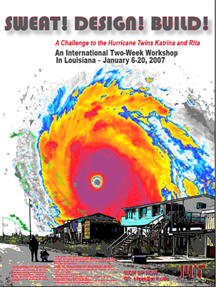
Faculty was drawn from the ongoing ‘Sustainable
Housing on the Bayou Initiative’ of TRAC - a coastal
Louisiana disaster recovery and preparedness organization,
Oxfam America - an international aid organization, and the
SIGUS Group in the School of Architecture and Planning at
MIT.
click here for slideshow
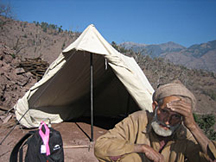
Presentation by Charles A. Setchell; Shelter,
Settlements, and Mitigation Advisor, USAID Office of U.S.
Foreign Disaster Assistance (OFDA). An up-to-date review of
the efforts being made in rebuilding after the earthquake
by the various national and international agencies.
20 MIT volunteers rebuilt houses damaged by the 'evil
hurricane sisters' Katrina and Rita. They worked with the
local NGO TRAC (a disaster mitigation group) in Houma about
50 miles southwest of New Orleans, the last large town
before the bayous of the coast. Housing was in 'iPods' (as
we call them) and meals were communal. Just like summer
camp!
www.trac4la.com
click here for slideshow
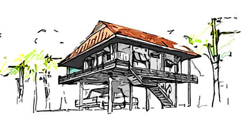
The New Practitioner course of SIGUS explored innovative
'lift house' designs for rebuilding coastal regions of
Louisiana. The international NGO Oxfam America and the
local Louisiana group TRAC have welcomed us to jointly
develop concepts for housing that meet the hurrican
challenges. The student team developed affordable and
appropriate housing concepts that exploited stilt housing
approaches built by volunteer help and 'sweat equity' of
the future owners. The design focused on both 'product' and
rationalization of a 'process' of construction appropriate
to the largely volunteer labor.
Professor Jin Guang-jun, Dean of the Harbin Institute of
Technology at the new Shenzhen Graduate School, was hosted
by SIGUS to meet other faculty and to tour the campus.
Prof. Jin explored possibilities of collaborative
activities between the schools including joint workshops,
short-term visiting professors, and joint international
conferences.
SIGUS sponsored the documentary film-maker Therese
Condit in the showing of her film: “Banda Aceh,
Indonesia: In The Wake of Tsunami, A Witness.” The
film looks at the rebuilding situation, almost a year after
the tsunami and its devastation, as most citizens of Banka
Aceh have yet to see the promised relief funds
materialize.
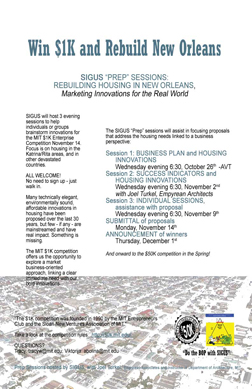
SIGUS led sessions to help individuals and groups
brainstorm housing innovations for the MIT $1K Enterprise
Competition. Focus was on the Katrina/Rita areas, and in
other devastated countries. It has been noted that many
technically elegant, environmentally sound, affordable
innovations in housing have been proposed over the last 30
years, but few - if any - are mainstreamed and have real
impact. Something is missing. The MIT $1K competition
offered the opportunity to explore a market-oriented
approach, linking a clear immediate need with bold
innovations.
SIGUS has undertaken several events addressing the
challenge of the hurricane disasters:
- The course 'Structuring Low-Income Housing
Projects' is focusing its analysis on
international development projects that have
dealt with disasters, targeting lessons that may
apply to the New Orleans region.
- Mentoring sessions will assist students and
groups in preparing proposals related to housing
innovations and the MIT $1K Competition. The goal
is to development proposals from a market
perspective that may apply to the disaster
rebuilding.
- SIGUS has been asked by
Oxfam USA to asses the rural housing
destruction in southern Louisiana, and consider
developing proposals for new housing designs and
assisting in the construction of pilot
projects.
A session at the Architectural Studies Colloquium
explored the possible contributions to the unserved 'bottom
of the pyramid' - the 'BOP'. With cities expecting to
double in size in the next 20-25 years the issues are
abvious and frightening. Special guest was Alyce Russo (MCP
'89) of the firm Schall and Russo Planning Works, and
together with SIGUS staff challenged the group to assess
contributions and brainstorm possible ways to get
involved.
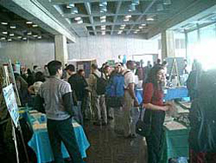
A poster display and computer images were presented at
the MIT's annual International Development Forum. TA Tracy
Wharton discussed the program with visitors to the
well-attended event.
Melody Tulier, a DUSP MCP graduate student, represented
SIGUS in presenting a paper at the inernational conference
"Urban Children and Youth in the Middle East and North
Africa" in Dubai, UAE. The paper entitled, "Children,
Participation, Global Challenges and Educational
Priorities," highlighted the SIGUS workshop in San Cayetano
which featured rapid interactive planning with families and
children.
Dr. Reinhard Goethert was a keynote speaker at the
ARCHCAIRO 2005 Conference "Globalization and Beyond:
Architecture, Communities and Settings." The conference was
hosted by the Department of Architecture at Cairo
University. His paper "Globalization, Practice and
Education: Old Challenges, New Demands" called for a new
model of education built around a 'learning-action'
model.
SIGUS is providing long-distance support to the studio
"Design Response in the Aftermath of Disaster" offered at
the University of South Wales in Sydney, Australia. The
studio focuses on tsunami relief and rebuilding efforts in
Sumatra, and is supported by a broader network of schools
internationally.
www.fbe.unsw.edu.au/news
How will you spend your Spring Break? Consider a 1 week
'Challenge' to brainstorm how to rehouse the families
displaced by the Tsunami. How would you tackle the
immediate large-scale demands, the limited materials, the
disrupted community and the overstressed government's
capabilities? Can there be more than a tent??? Form a team
and contribute!
Two afternoons will feature presentations from
architects recently returned from Indonesia. Mentoring
sessions throughout the week will help develop ideas.
Advisors are professionals from Sri Landa and Indonesia, as
well as from the local expert community. A presentation at
the end of the week will identify promising ideas.
Representatives of the winning team will be sent to
Washington, D.C. to present their ideas to the Disaster
Mitigation Office of the US Agency for International
Development. Open to teams and guests throughout the MIT
community. An event hosted by SIGUS.
Learn More!
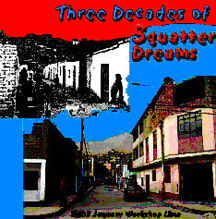
"Three Decades of Squatter Dreams"
In 1969, four squatter communities were surveyed by MIT
in Lima, Peru: Cuevas, El Ermitano, El Agustino, and
Mendocita, and documented in the book, "Urban Dwelling
Environments" (Caminos, Turner, Steffian; MIT Press, 1969).
It is now 35+ years after: What happened? How did they
manage? Do they still offer housing opportunities for the
low income?
SIGUS revisited the settlements in January 2005, for a 2
week workshop to explore these questions. The workshop
collaborated with students from the Facultad de
Arquitectura Urbanismo y Artes (FAUA) in the Universidad
Nacional de Ingenieria (UNI), and with NGOs working
actively in the settlements. Four teams of students
interviewed families and documented their house expansion.
They were joined by two special groups: one explored the
use of internet cafes in the squatter settlements, and
another developed concepts for a self rish-assessment
checklist for families to make informed decisions on
earthquake risk. As a result, a collaboration was
established with FAUA-UNI to promote joint research of
students from MIT and UNI, and proposals are already being
considered for the Summer of 2005.
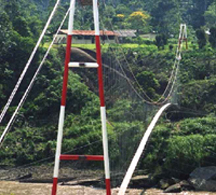
"The Humanitarian Bridgebuilder"
Toni "El Suizo" Ruttimann was hosted by several groups
from MIT, including SIGUS. After an earthquake struck
Ecuador in 1987, Toni left Switzerland immediately after
graduating from high school, determined to help in any way
he could. With no technical background, he invented a
method of building suspension bridges by hand through
community involvement, with little money, using steel
cables and pipeline donated by oil companies. 17 years
later, 234 bridges have been built across Latin America,
Cambodia, and Vietnam, helping over 600,000 people.
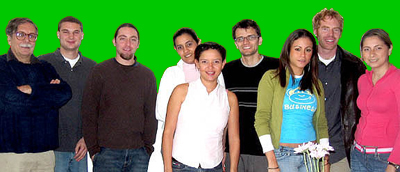
Students from the Albert Einstein University in El
Salvador - Pamela, Carmen, Lily and Claudia - met with MIT
students for two days to discuss the San Cayetano Workshop
carried out jointly with SIGUS in the summer. The students
have taken the workshop methodology and are developing it
for their thesis focused on housing design. They continue
to monitor and support the San Cayetano project, and plan
to use the participatory approach in other settlements. The
San Cayetano Workshop was funded by the MIT Service
Learning Program, with additional contributions from local
NGOs.
SIGUS joined with the Aga Khan Program in hosting Biresh
Shah, a colleague from Kathmandu, Nepal. Mr. Shah presented
slides of the tensions of modernity and tradition in
architecture in the design of buildings. Mr. Shah was a
SIGUS colleague in 1988 when he received a SMArchs degree.
He is a practicing architect and teaches at the Tribhhuwan
University in Kathmandu. He is founder and director of
ARCHIPLAN, an architecture and planning firm.
SIGUS participated in the Third Annual International
Development Forum at MIT. The Forum is a way of sharing
information and celebrating the rich variety of activities
at MIT throughout the year that contribute to international
development. About 40+ MIT academic programs and student
groups partipated in the Forum. The goal of the Forum is to
highlight the ways that MIT makes a positive difference in
the world and helps students gain skills and experiences
that will equip them for the future.
web.mit.edu/idf
SIGUS partnered with 45 earthquake-displaced families in
designing their resettlement community in a 1-week
workshop. Both adults and children actively particpated in
the workshop. Essentially, two workshops ran parallel with
joint meetings at various points to exchange ideas. Three
students from the Department of Architecture and Department
of Urban Studies and Plannin participated (Gabriel
Arboleda, Melody Tulier, Susana Williams), as well as staff
from two local NGOs and students from local universities in
El Salvador. Information was also collected on prototype
houses which were offered to the displaced families. This
information provided material for further study during the
fall term at MIT in the course, "The New Practitioner."
Preliminary field surveys from two 'site and services'
low-cost developments from the 70s were also undertaken as
further reference for the course at MIT. The workshop was
made possible through funding from the MIT Service Learning
Center and Trocaire, an Irish-Catholic NGO.
SIGUS joined an international group of universities,
research centers and NGOs as a founding partner in the
"Global Open Learning Forum on Risk Education (or GOLFRE)."
Representatives from India, Japan, Nepal, South Africa and
the United Kingdom joined the network to tap the tacit
knowledge, practical wisdom and human capital latent in the
minds and practices of field workers as the principal
resource for training and education. Susana Williams, a
dual-degree student from MIT, participated in the SIGUS
team.
The preliminary work continues on exploring the use of
'shape grammars' as a teaching tool for schools. Children
are seen as key 'change-agents' in discovering new designs
using traditional elements. The key questions remains: how
to confront the McDonaldization of the world.
Several of the January Workshop reports are now
available in CD format. Please inquire for specific
workshop.
A second version of the CD on "Upgrading Urban
Communities: A Resource for Practitioners" has been
completed. It is being distributed by the World Bank
Thematic Group for Services to the Urban Poor, and is
sponsored by the Cities Alliance and DFID.
web.mit.edu/urbanupgrading
Website and CD
This is a prototype web site currently being developed
by SIGUS for the World Bank. The work is planned together
with the IIED (International Institute for Environment and
Development), London.
web.mit.edu/urbanupgrading/urbanenvironment
Website and CD
Under preparation for the Water Utility Partnership, a
joint program of the Union of African Water Suppliers
(UAWS), Regional Center for Low Cost Water and Sanitation
(CREPA), and Training, Research and Networking for
Development (TREND). Sponsored by the European Commission
and the Water and Sanitation Program. The aim of the
Toolkit is to provide sector practitioners, policy and
decision-makers, access to information on current trends
and knowledge gained from past experience regarding water
supply and sanitation service delivery to low income areas.
The Toolkit should enable readers to identify problems or
challenges, and draw up a strategy for addressing these
challenges using information and other resources assembled
for this purpose.
web.mit.edu/urbanupgrading/waterandsanitation


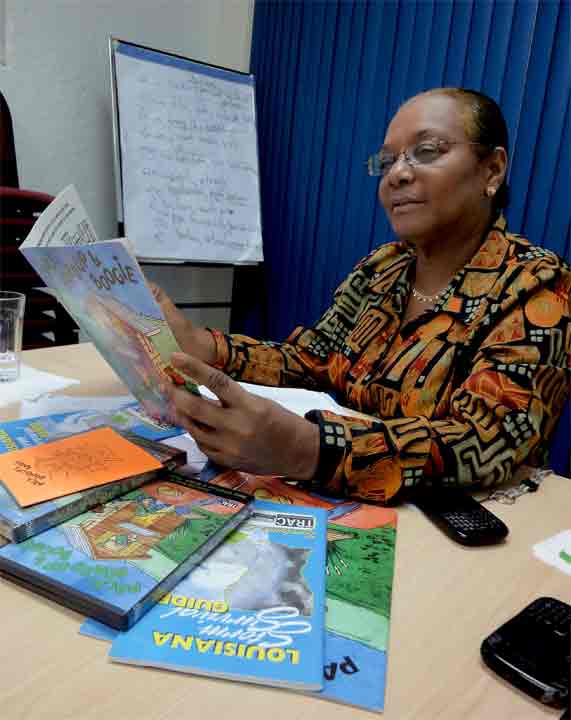
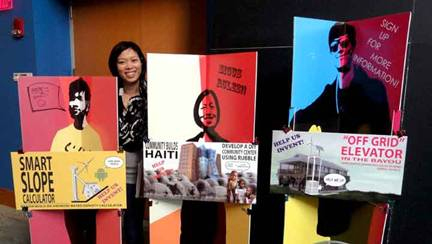


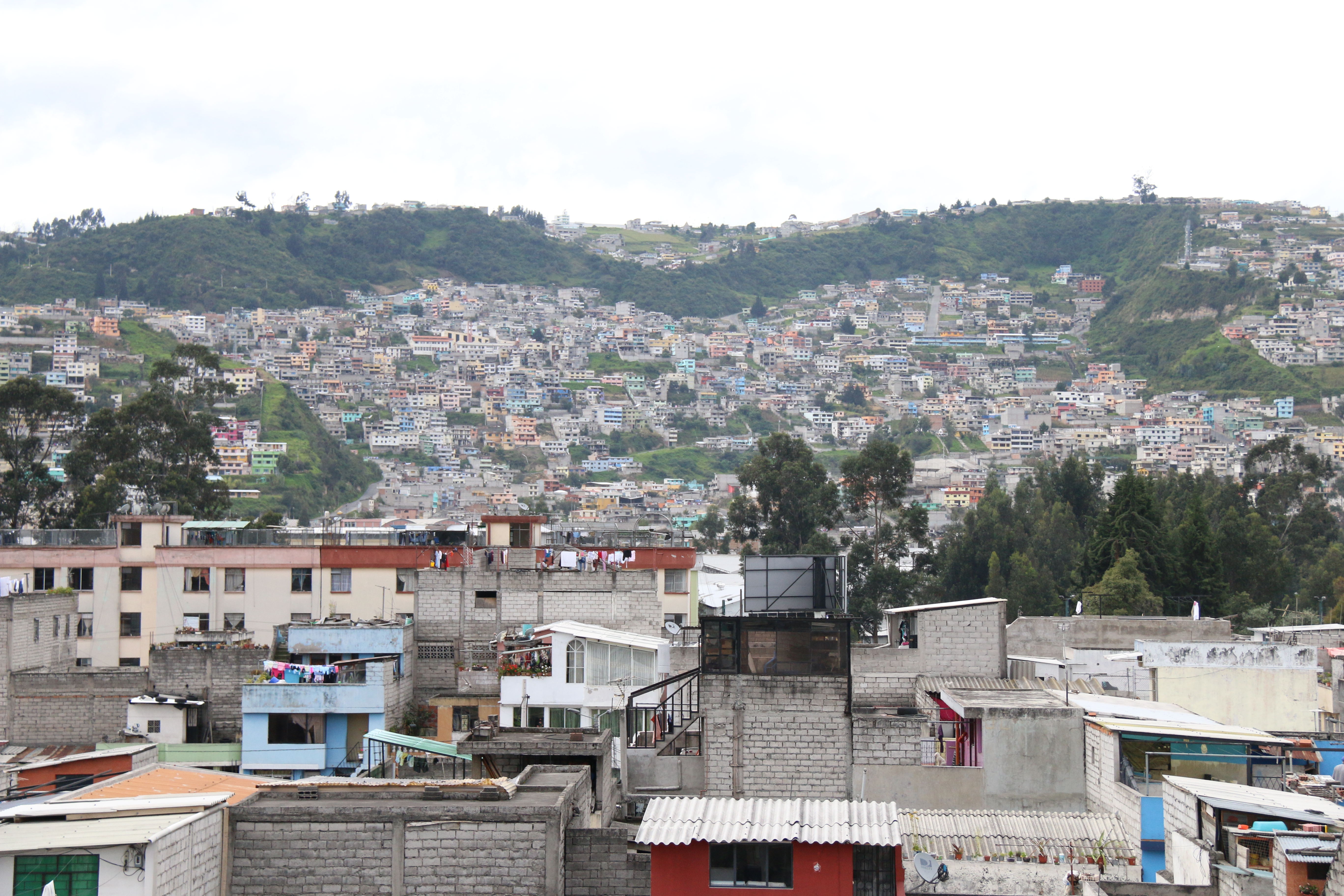
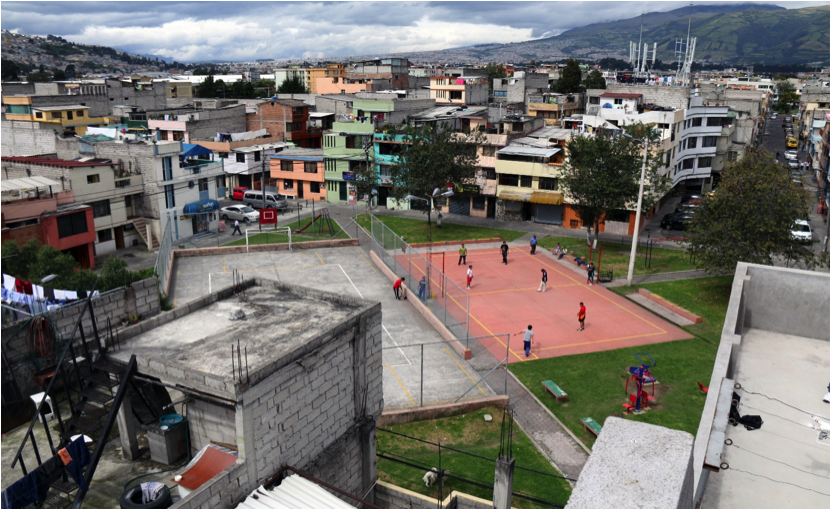
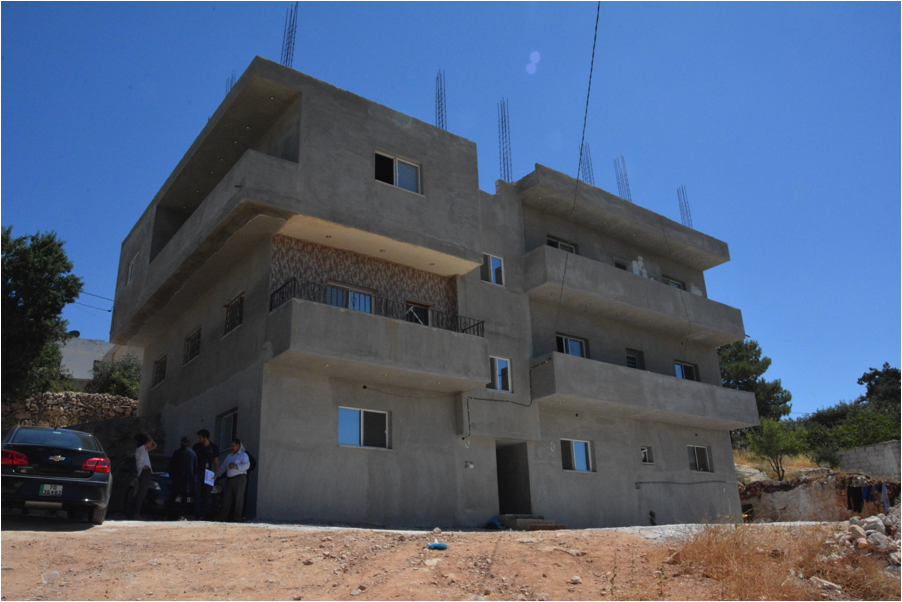

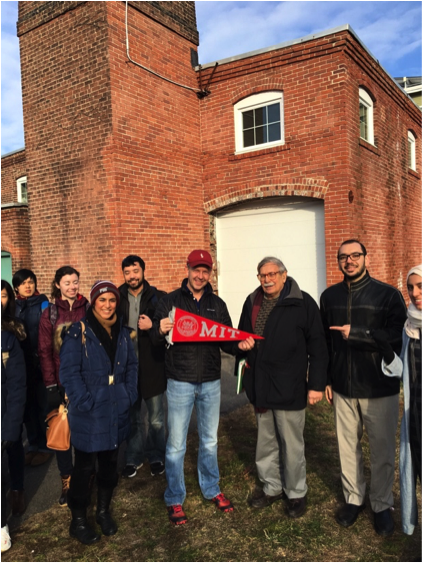
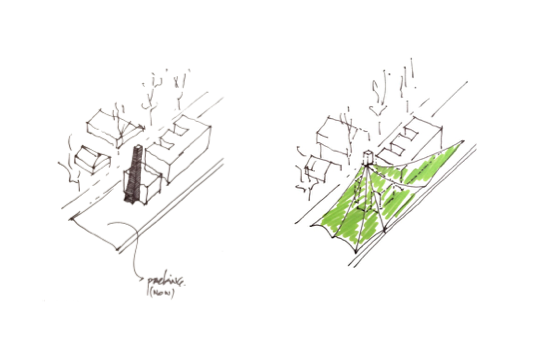
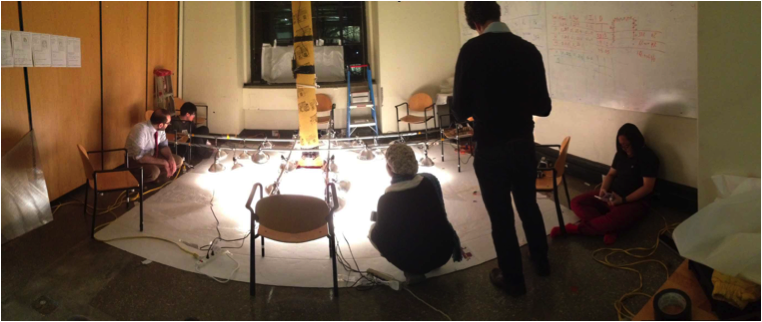
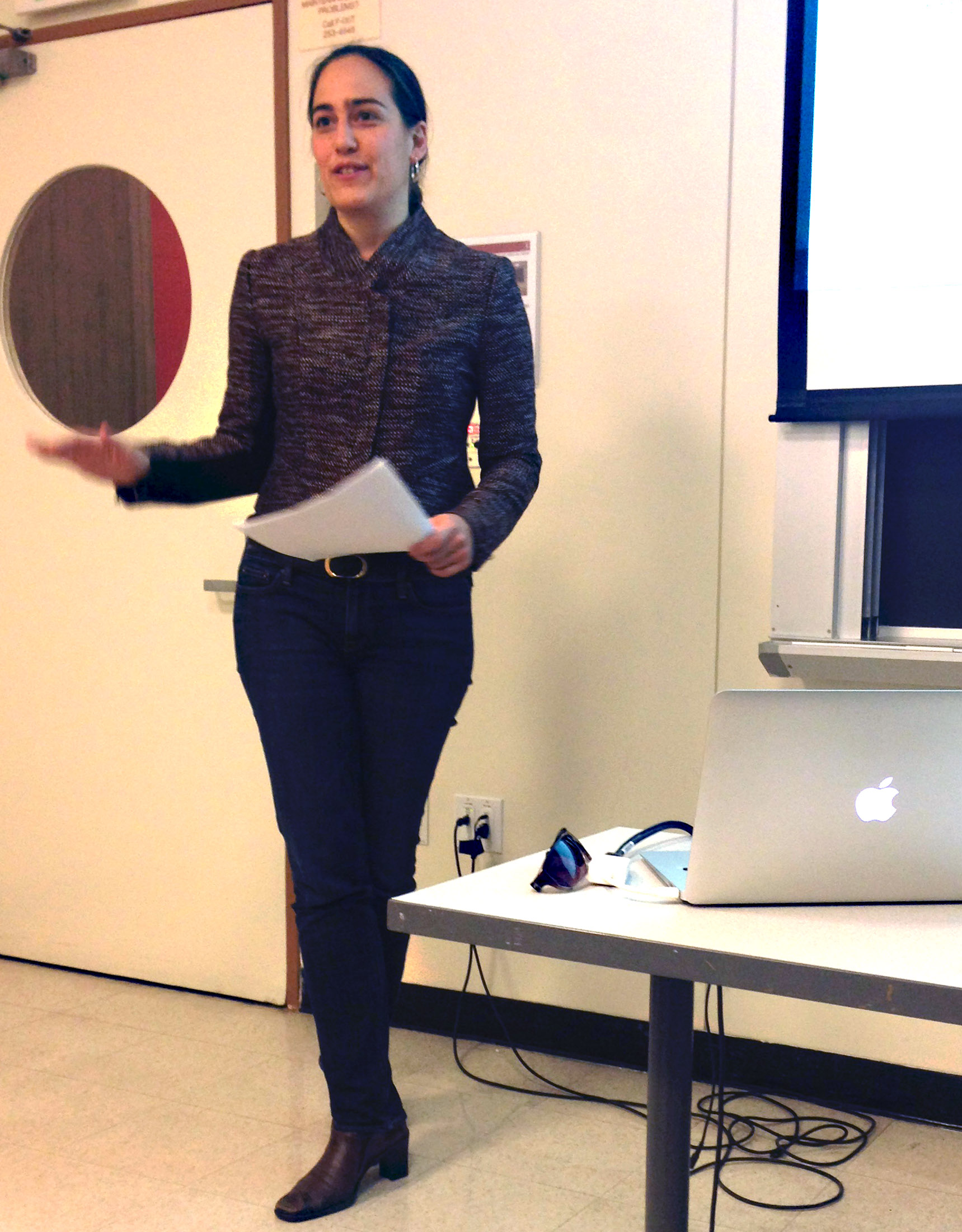
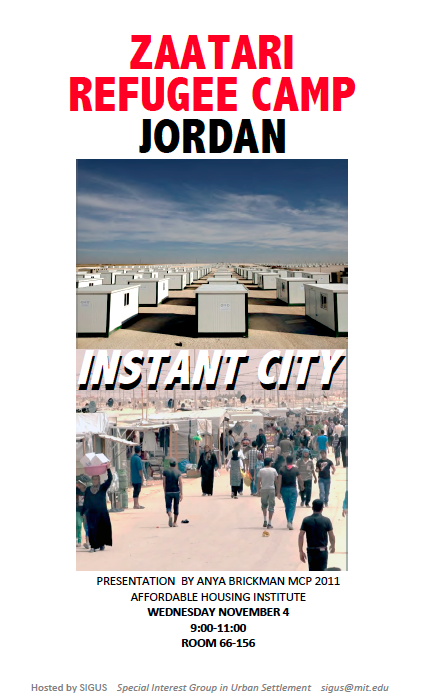

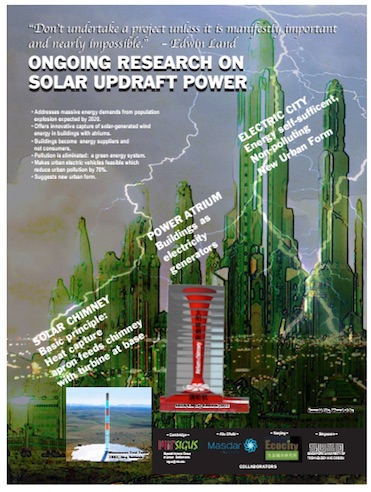
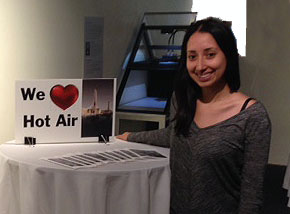
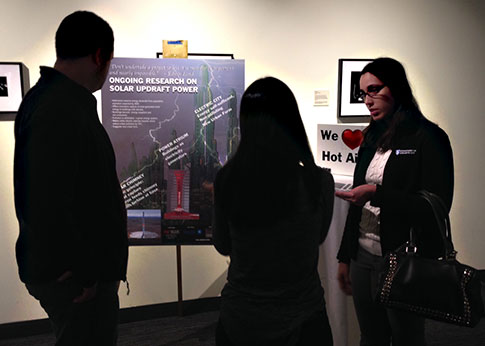



















 Many chimneys remain from the past industrial era of New England driven by the exploitation of regional rivers. These largely abandoned chimneys are relatively difficult and expensive to remove, and their reuse is a win-win opportunity for energy generation. The chimney network from former factories could provide the backbone for a low-cost, quick entry for power generation for the cities that developed around the previous industrial corridor.
Many chimneys remain from the past industrial era of New England driven by the exploitation of regional rivers. These largely abandoned chimneys are relatively difficult and expensive to remove, and their reuse is a win-win opportunity for energy generation. The chimney network from former factories could provide the backbone for a low-cost, quick entry for power generation for the cities that developed around the previous industrial corridor. 
